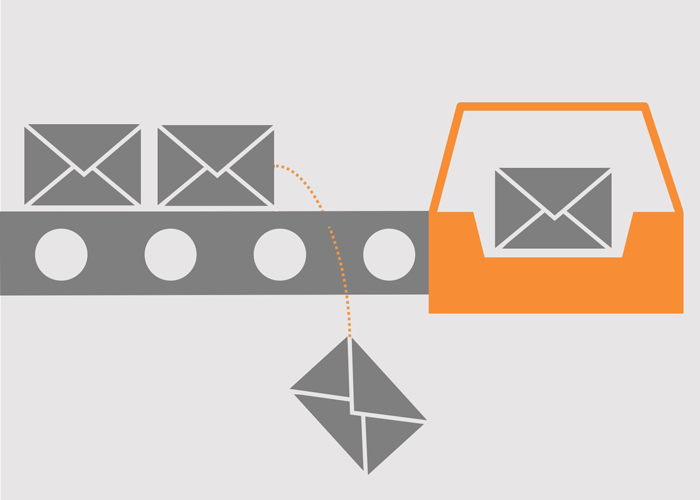
With Google constantly adapting the search algorithm it means you not only need to be thinking about what are the best SEO practices right now but also, you need to keep an eye on where Google seems to be heading.
For example, as a community, we’ve known that mobile first indexing was going to be a big deal because Google has been giving us hints for 18 months. Those that adapted their sites accordingly have not seen any negative impact from the change over to mobile first indexing, those who ignored it have not had such a seamless transition.
Link building is no different.
Google has reiterated that any type of link acquisition is against their terms and you’d be naive to think there won’t be adjustments to the algorithm that affect links.
I have put together some of the strategies you could use to future proof, or at least where you might want to be looking to ensure you don’t get caught out in the future.
You’ll learn the importance of having a community presence – the damage guest post signposts might do in the future, increasing relevance as well as the technical delivery of mass outreach. We’ll be discussing the role of personalization and email deliverability too.
#1 Develop a Community Presence
Blog owners are less trusting these days and it’s getting worse. They get bombarded with offers on a daily basis. From our experience at Authority Builders, they are still open to having niche relevant content written by niche trusted experts, but you need to be able to demonstrate your expertise.
Unless you have a recognized qualification (for example, a nutritionist writing about diet), you have to work hard to be able to demonstrate your credibility as a niche expert.

If it’s feasible, join Facebook groups and add value and get your name out that way. Become part of that community.
Spend the time (and possibly money) to secure guest posts on some high authority, niche relevant websites. You can then link to the posts in your prospecting, demonstrating your expertise and adding trust.
BONUS: FREE Guide on How to Acquire High-Quality Links
Being recognized as an expert is also going to help you keep the cost down. Usually, the larger authority sites are charging more and more as they recognise their value.
That is unless they see you as adding value, as an expert.
#2 Avoid Link Sign-posting
You should really consider how you want your guest posts to be displayed on the site. Until now, most SEOs have focused on whether the link is a do-follow or no-follow link.
If we pay for the post, some sites will label it as a sponsored post, so it’s obviously paid and most likely considered an advert by readers and Google alike.
Google doesn’t like active link building of any type.
Avoid getting links on pages that out you like this:

It is a clear signal to Google that potentially the post has been actively sought out, they will devalue the link (read about the various white hat penalties). You should look to be future-proofing your guest posts against obvious guest post labelling, or potentially face the consequences in the years to come.
#3 Put Relevancy at the Forefront
Google is heading towards increased relevancy and that’s where we should be heading. One strategy we could implement is to increase our link relevancy.
Most SEOs are switched on to the idea of ensuring the site is either a very high-value target or niche relevant to their site (both of those would be the ultimate link placement).
With “increased relevancy” seemingly at the forefront of Google’s mind, it would make sense to try and tailor the content to be relatable to both the guest post site (so it’s accepted by them and adds value), but also relevant to the page you want to link to on your site.

It’s not always easy, it requires a little creativity, to come up with the perfect content that ticks all those boxes, but if Google is looking at relevancy it makes sense to move in that direction in anticipation of future changes.
Then there’s geo-relevance. If your site is targeting a US audience, having guest posts on sites that have a larger portion of their traffic from the US could well increase relevancy.
There is no clear evidence that it does now, but it could in the future so if you’re looking to be one step ahead of other SEOs, why not do a quick check?
It’s something we look at when we review site for the Authority Builders platform.
We need the quality of the site, metrics, traffic and location of traffic to make sense so we know it’s adding value to our clients both now and in the future.
#4 Make Sure Mass Email is Compliant
We’re pretty used to Can Span regulations and now we have GDPR to stay on the right side of too, especially if we’re sending out bulk email for link prospecting.
We’re not able to offer legal advice, but we can talk around the subject a little and explain what other “experts” have said about the subject and you can research and make your own decision.
Initially, people were worried that you were not allowed to contact anyone without their prior consent, however, there is a clause in the regulations that stipulate that contact can be made without prior approval if there is “legitimate interest”.

As we’re offering an exchange, we’ll provide content in return for exposure to their audience (and a link) and in some cases we may offer money, other direct marketing companies have been able to argue that it’s a legitimate interest.
That’s for you to make your own judgment on, but if you’re looking to stay GDPR compliant in general, you should be aware of the following:
1 – In the email you send out, you have to stipulate where you got the contact information from. It has to be on the first email you send out to them.
2 – Should they ask, you have to provide them with all the data you have on them.
3 – You should not have any data on contacts that are not relevant to your needs.
BONUS: FREE Guide on How to Acquire High-Quality Links
It’s a personal thing how seriously you take GDPR, but if you want to future-proof your mass outreach, it should be a consideration.
#5 Work on your Email Deliverability
There are currently over 120 million malicious files that have been discovered floating around cyberspace, being used for malicious intent, normally delivered by email.
This has meant a lot of money has been spent on spam filters to identify these files before they do any damage and consequently, it’s becoming increasingly difficult to get your emails landing in inboxes when sending out bulk emails.

A lot depends on the historical data of both your email address and the email server you’re using to send emails. It used to be enough to get a Gmail address and use it to prospect. But that’s no longer an optimum way to run outreach.
You’ll be quickly found out, especially if you haven’t cleaned up your email list and you are getting a tonne of email bounces.
Sendgrid is one solution. It acts as a middleman between your mail server and the email receiver and kind of “vouches” for you, you get to use their reputation.
That’s not a new solution, some SEOs and agencies have been using it for years, they were future-proofing their business. Now the time has come where this kind of solution becomes a necessity.
For larger operations, you might want to connect software like Sendy or Mautic to an Amazon SES. It costs next to nothing (the first 60,000 emails are free) and both are affordable. Sendy is a small one time fee and Mautic is open source.
You need to be thinking about how to improve your deliverability because it’s going to be increasingly more complex.
#6 Personalize your Emails
Research suggests that “canned” email is dead, or at least dying. We’re seeing fewer and fewer results from using completely templated email.
It’s probably because A) a lot of SEOs are now using templated emails badly so guest post prospects are becoming skeptical, and B) more and more people are running outreach, email inboxes are becoming flooded with offers.

The result is, you need to do something that makes your offer to stand out.
You still need to automate and send out prospecting emails in bulk, but at the same time, you need to be savvier about it. You need to personalize the emails somehow and find the sweet spot between personalization and automation.
One way to do it is to chunk prospects into small subgroups.
For example, if you are looking for a link from a yoga website. You could filter prospects to have sites that are focused on one aspect of yoga, let’s say mostly the spiritual effects of yoga.
With this group as your focus, you might write a prospecting email talking about some recent research on how yoga helps with reduced cortisol. It physically de-stresses you.
It’s still a templated email, but to a smaller group which would be especially interested, so it feels more relevant to the reader (Site owner).
Personalized and automated is the key.
#7 Turn Outreach into a Processed Machine
There’s going to be a point in time, in the not so distant future when you start running out of data. Especially if you’re doing mass outreach. Of course, there’s no reason why you can’t contact prospects more than once, but you’ll want to do it in a strategic way, you can’t spam them, it’s counterproductive.
You need a process in place.
A lot of smaller agencies and SEOs use spreadsheets religiously. We use both spreadsheets and our custom built platform to manage our own processes.

Another option is a CRM. You can upload contacts in bulk and it will automatically make you aware if some contacts are being replicated, you’ll avoid “spamming” prospects. Once you’ve emails them once, they’ll also track their movement on any of your digital properties that are connected.
Mass Outreach Funnels – With outreach, you get a 30% increase in response rate from follow up emails.
It could be that your emails are landing in their inbox but they’re busy and your follow-up emails jog their memory. There’s a theory that timing is everything.
BONUS: Free Guide on How to Scale Outreach for your Agency
Ensure your system includes a follow-up. Some tools automate this, others require you to drive it. Whatever system you have in place, ensure that you’re following up your prospects to get the maximum benefit from your cold prospecting.
Summary
Looking at the future is an important lesson we should have learned from the past. Especially if you have been on the wrong end of a Google update.
There are things we can do concerning email deliverability that will both optimize our processes now and also future-proof our ability to have our prospecting land in inboxes rather than spam. We need to ensure we’re staying compliant now too.
I talked about the benefits of having a community presence, positioning ourselves as an expert. I also highlighted the need to increase relevancy wherever possible and avoid signposting.
Keeping one eye of the future will help you keep you on the right side of any Google algorithm updates.
